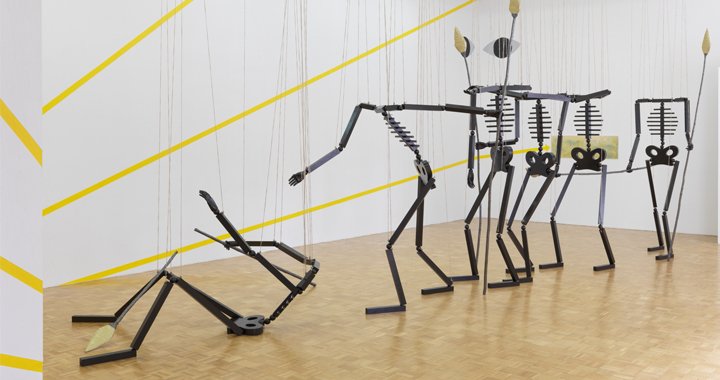
Prickly guests
The 33rd Ljubljana Biennial of Graphic Arts
08/07/2019
What is a sufficiently powerful type of communication in this age of post-truth? What do we still have at our disposal as an effective weapon based in critical, reasonable and humanistic values, that addresses the masses? Black humour, jokes, satire, parody and caricature – these genres have never lost their power and surface again and again in times of political and social crisis. Therefore, for good reason, the artists’ group Slavs and Tatars, who are the curators of this year’s Ljubljana Biennial of Graphic Arts (subtitled Crack Up – Crack Down), have focused on the acerbic nature of satire and caricature and have selected works by artists who do not shy away from criticising, commenting on and speaking ironically about ideological and political discourses in the context of both the past and the present.

Crack Up - Crack Down, 33rd Ljubljana Biennial of Graphic Arts, curator Slavs and Tatars, 2019. Exhibition view. Photo: Jaka Babnik. MGLC Archive.
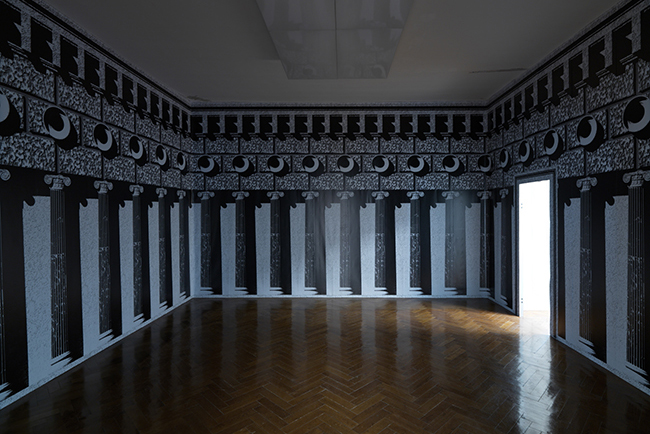
Crack Up - Crack Down, 33rd Ljubljana Biennial of Graphic Arts, curator Slavs and Tatars, 2019. Exhibition view. Photo: Jaka Babnik. MGLC Archive.
The 33rd Ljubljana Biennial of Graphic Arts, established in 1955 (the same year as documenta in Kassel) and thus one of the oldest biennials of its type, continually seeks to redefine the graphic media in terms of the present day and uphold their position in the contemporary art discourse. It should be noted that, as a product of the Cold War (like the Tallinn Print Triennial so well known in the Baltic region), the Ljubljana biennial was always a powerful platform for the language of art, because under socialism, graphic art as a medium was a relatively more democratic, egalitarian form of expression than, say, painting or sculpture. As stated by the biennial, over the past six decades it has managed to present art in a “global” context by inviting artists from the West as well as the East and also including artwork from the Third World, or mainly southern non-aligned countries.[i]
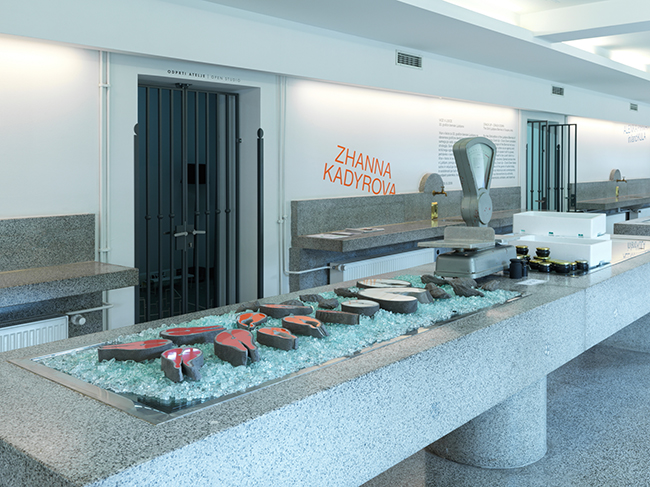
Crack Up - Crack Down, 33rd Ljubljana Biennial of Graphic Arts, curator Slavs and Tatars, 2019. Exhibition view. Photo: Jaka Babnik. MGLC Archive.
The sustainability of these two art events has also been contingent on their prestige and the diversity of graphic arts as a medium. However, in the past two decades, since a “wall” no longer separates the West and East, they must challenge themselves ever more by posing questions about their role, identity and language in the context of global art processes. As curators, Slavs and Tatars have also had to take into account both the historical and modern-day geopolitical context, including aspects of Slovenian art life, which reach deep into nonconformist practice.
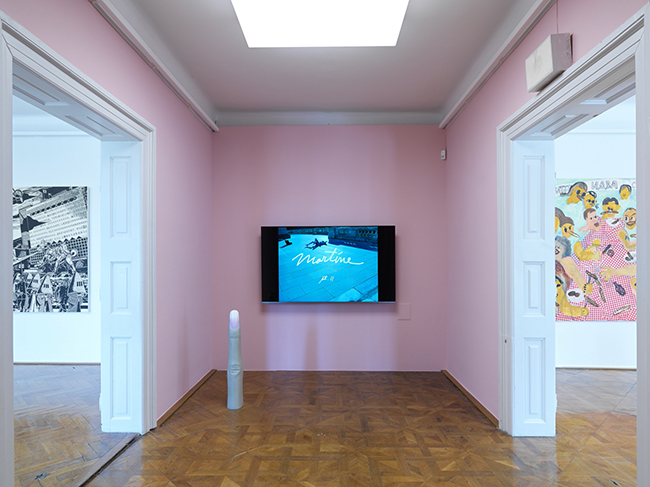
Crack Up - Crack Down, 33rd Ljubljana Biennial of Graphic Arts, curator Slavs and Tatars, 2019. Exhibition view. Photo: Jaka Babnik. MGLC Archive.
By choosing to invite the artists’ group Slavs and Tatars to curate the 33rd Biennial of Graphic Arts, the institution has made a successful and sufficiently safe decision, because the group’s name has already long been considered a synonym for quality in the international arena of art and it is well known for its high standards of art representation. Payam Sharifi and Kasia Korczak, the couple at the heart of Slavs and Tatars, founded the collective in 2006 with events related to reading and research, which later grew into a vigorous practice of art. One of their best-known projects involves the strange hero and rebel Molla Nasreddin, an internationally familiar character known by a variety of different names from Morocco to Croatia and from Sudan to China and who is often depicted riding on a donkey, facing backwards. By using humour to question moral and ethical norms, Nasreddin has become something of a talisman for Slavs and Tatars. He also confirms the group’s long-standing, unflagging interest in studying issues of binary relationships and dichotomies, which weave through almost all of the group’s work.
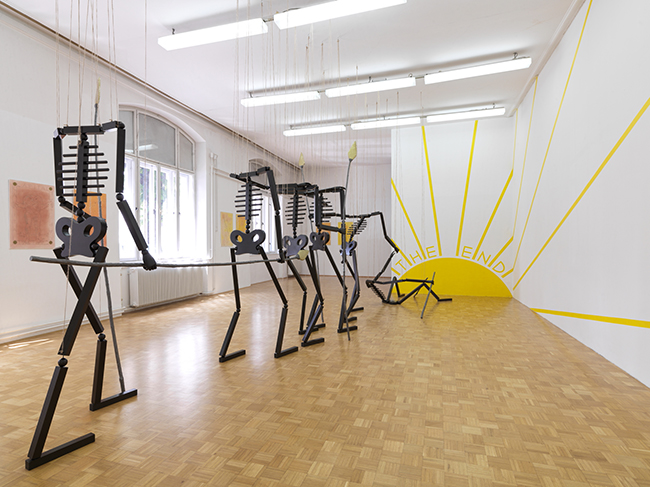
Crack Up - Crack Down, 33rd Ljubljana Biennial of Graphic Arts, curator Slavs and Tatars, 2019. Exhibition view. Photo: Jaka Babnik. MGLC Archive.
With the Ljubljana biennial, Slavs and Tatars do not hesitate to pose uncomfortable and specific questions regarding the biennial’s location, both geopolitically and within the discourse of art language: “Instead of considering ‘the graphic’ as a medium or vessel – one used to distinguish between those who belong and those who do not – why not reclaim its philological waters, its editorial agency?”[ii] Using satire and caricature (both forms of linguistic expression that are full of powerful political and ideological meaning) as an instrument is nothing new for Slavs and Tatars; they have always freely improvised with these genres in their artwork. They bring particular attention to satire as a form of resistance, yet at the same time they remind us that satire can also be a part of propaganda. Choosing satire as a medium and a form of expression that allows one to speak ironically, laugh, be cynical and awkward, grotesque and foolish, but also critical and inquiring brings a breath of fresh air to the backdrop of apocalyptic hysteria and also political correctness that we witness today.
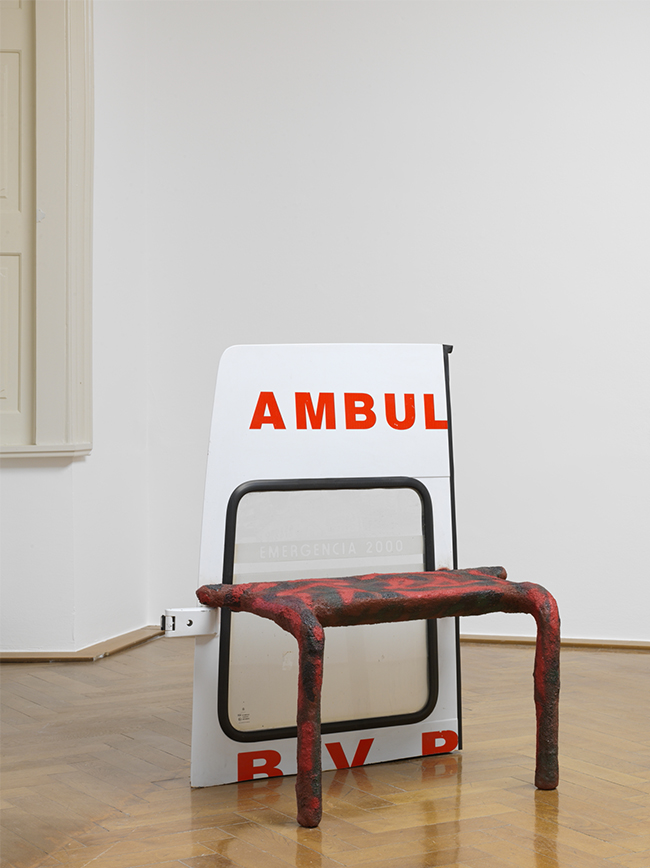
Crack Up - Crack Down, 33rd Ljubljana Biennial of Graphic Arts, curator Slavs and Tatars, 2019. Exhibition view. Photo: Jaka Babnik. MGLC Archive.
Perhaps this feeling also arises from the fact that satire is a very human form of expression, one that is understandable and close to each and every one of us. If the older generation grew up encountering satire and caricature daily in newspapers and magazines (the genre was an especially beloved companion to those who grew up in lands subjugated by totalitarian or authoritarian regimes, such as the former Soviet Union and also the Middle East), then today’s youth finds social media memes just as self-evident. Satire has one very good quality: it is able to laugh about itself and others, and therefore it speaks to the masses, to all kinds of groups of people, regardless of their social standing, race or gender. One vivid example that the curators have included in the biennial is Top lista nadrealista (Surrealists’ Top Chart), a cult television show that aired from 1984 to 1991 on TV Sarajevo. The show’s sketches portrayed the attitudes of regional ethnic groups towards language and other issues; for example, an argument between a Croatian husband and his Serbian wife escalating into an armed conflict. Needless to say, episodes that aired in the late 1980s and 1990s proved prophetic regarding the Yugoslav Wars.
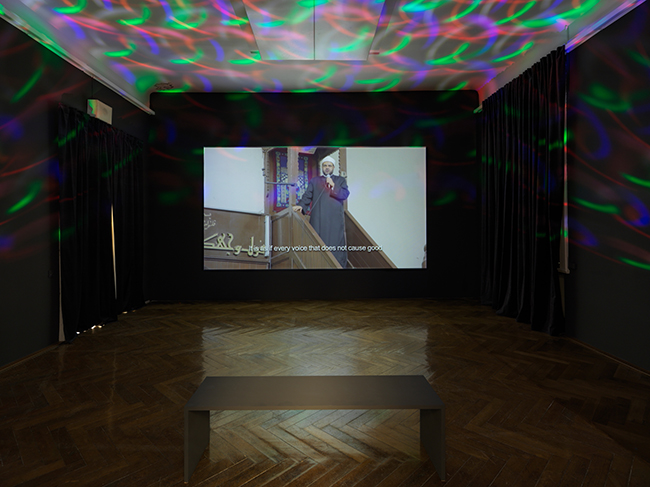
Crack Up - Crack Down, 33rd Ljubljana Biennial of Graphic Arts, curator Slavs and Tatars, 2019. Exhibition view. Photo: Jaka Babnik. MGLC Archive.
Slavs and Tatars have deliberately created an exhibition that invites artists from different generations and with different life experiences; they have also done a thorough study of the Slovenian art environment. Slovenian artists, however, do not form the majority of artists in the biennial, which one would expect might cause some discontent on the part of the local art scene. But one must take into account the fact that an international focus often leads to precisely this kind of format, with one positive aspect being that the local environment is thus introduced to a broad and diverse range of materials that would otherwise not be encountered in Ljubljana. At one of the meetings with local curators I heard the opinion expresesed that this kind of exhibitions serve as a good example for local art practice because they set a high standard of quality regarding the organisation of exhibitions that is not necessarily always present beforehand.
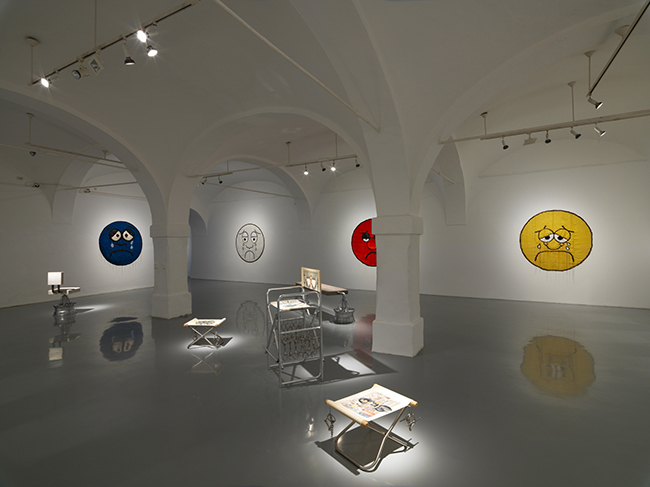
Crack Up - Crack Down, 33rd Ljubljana Biennial of Graphic Arts, curator Slavs and Tatars, 2019. Exhibition view. Photo: Jaka Babnik. MGLC Archive.
Works by some artists at the Ljubljana biennial seem to serve as major strands linking together the various event venues, of which there are ten in all. For example, Hamja Ahsan’s The Aspergistan Referendum (2019) and Shy Radicals: The Antisystemic Politics of the Militant Introvert (2018), a quasi-manifesto inviting people to join the Aspergistan Federation, a nation founded by shy people, introverts and those on the autism spectrum. It calls for a global uniting of introverts in order to fight extrovert domination. Although tongue-in-cheek, Ahsan’s manifesto clearly points to the difficulties of the modern-day world in accepting differences and doing away with discrimination. Having always been pushed to the sidelines, the only redress available to introverts is to unite and try to have a say in things.
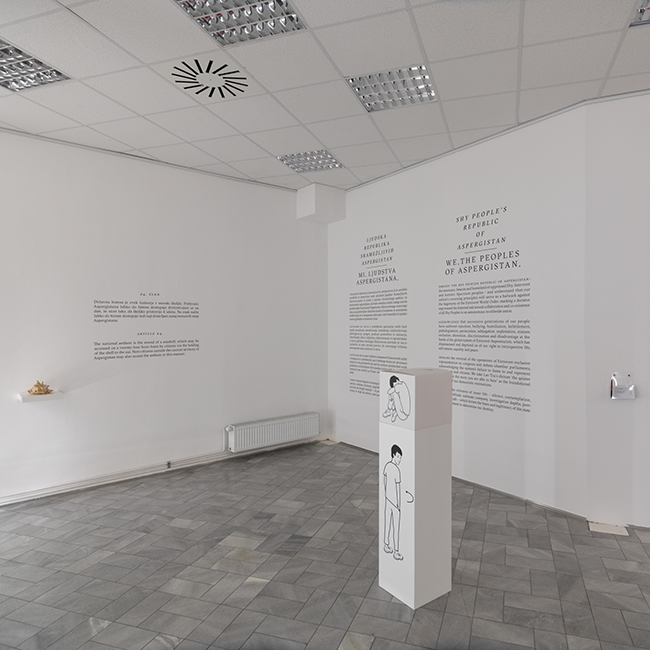
Crack Up - Crack Down, 33rd Ljubljana Biennial of Graphic Arts, curator Slavs and Tatars, 2019. Exhibition view. Photo: Jaka Babnik. MGLC Archive.
Stane Jagodič, one of the Slovenian painters in the exhibition, offers a sarcastic view of post-war and post-socialist Europe. One must admit that Blue-Eyed Beauty (1977) – a person in a suit with two fried eggs for a face and bright blue eyes – is so screamingly contemporary that, in spite of being created more than four decades ago, it could just as well be a very precise commentary about a modern-day person, say, a clerk (or hipster) who is only interested in material accomplishments and self-promotion on social media.
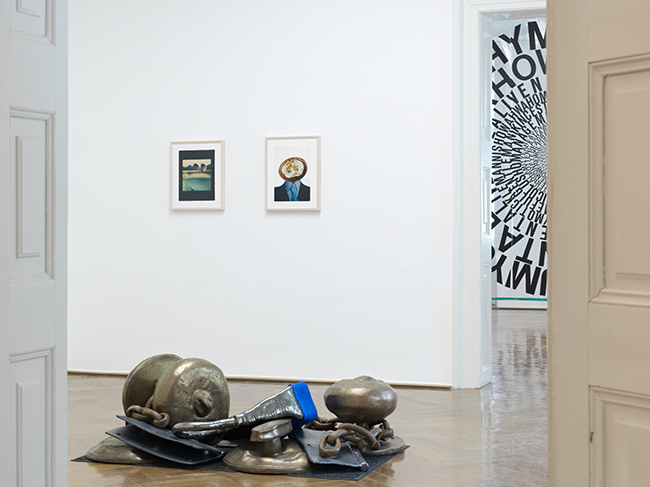
Crack Up - Crack Down, 33rd Ljubljana Biennial of Graphic Arts, curator Slavs and Tatars, 2019. Exhibition view. Photo: Jaka Babnik. MGLC Archive.
Also agreeable is the curators’ decision to include artists who work with various simple, low-quality materials and calling attention to so-called “low culture”. These include Marlie Mul’s Cigarette Hedgehog (2012, 2016), Cigarette Ends Here (Smoking Pregnant Woman, Baby and Friend) (2012) and others – cigarette buckets filled with a snow-like substance full of cigarette butts. The presence of these works reminds viewers of the presence of people, the masses and their labour “as the dirty stuff not only under our fingernails but swept beneath the rugs of polite discourse”.[iii]
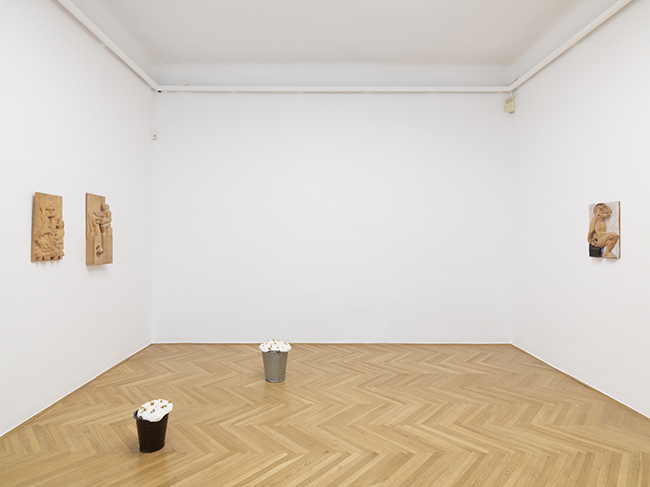
Crack Up - Crack Down, 33rd Ljubljana Biennial of Graphic Arts, curator Slavs and Tatars, 2019. Exhibition view. Photo: Jaka Babnik. MGLC Archive.
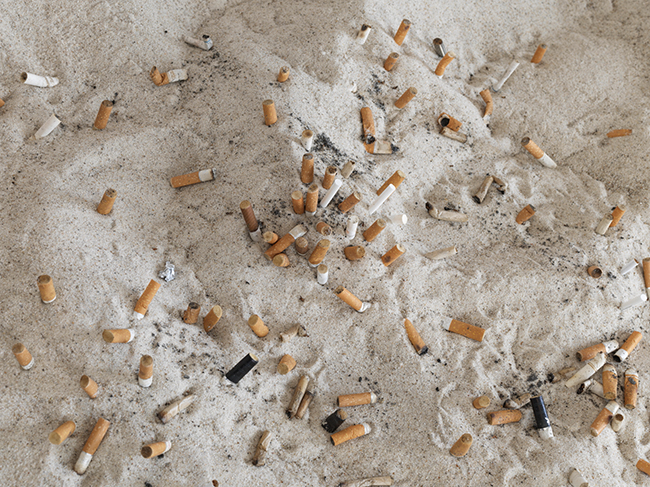
Crack Up - Crack Down, 33rd Ljubljana Biennial of Graphic Arts, curator Slavs and Tatars, 2019. Exhibition view. Photo: Jaka Babnik. MGLC Archive.
Lin May Saeed also has an untraditional approach to materials. She focuses mostly on the relationship between humans and animals, and since 2006 she has been working on the series The Liberation of Animals from Their Cages. By using simple materials such as styrofoam, she particularly emphasises the roughness and uncomfortable nature of this theme. Of particular note in the exhibition is her sculpture Reiniger (2006), a masked figure holding a tortured animal in its arms. Saeed created it after becoming acquainted with the environmental catastrophe after the Exxon Valdez oil tanker ran aground off the coast of Alaska in 1989.
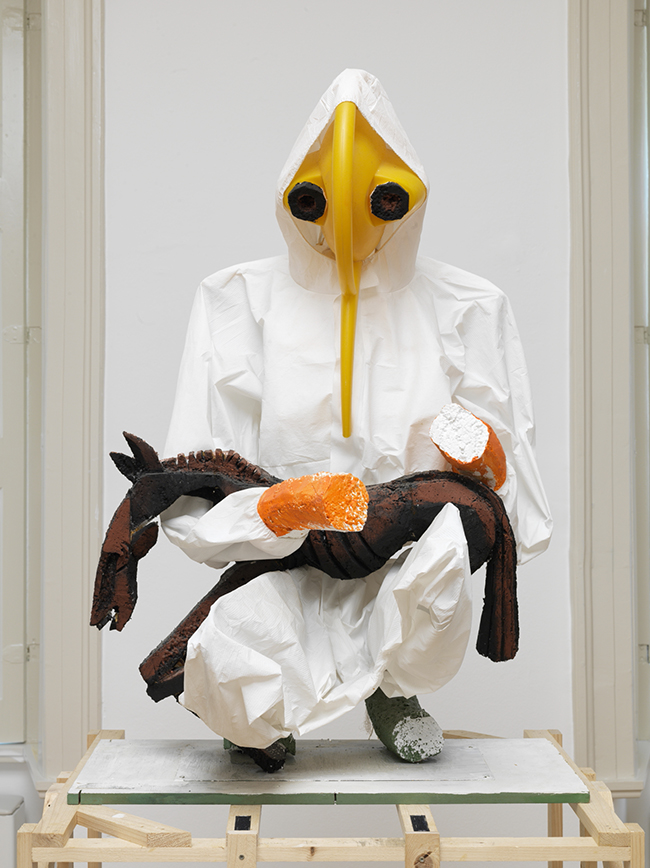
Crack Up - Crack Down, 33rd Ljubljana Biennial of Graphic Arts, curator Slavs and Tatars, 2019. Exhibition view. Photo: Jaka Babnik. MGLC Archive.
Today’s satirists are not always professional artists; they could be anyone, although usually they are of the generation born between 1980 and 2000, in other words, Millennials – people who create and distribute satire on social media such as Facebook, Twitter, etc. The Ljubljana biennial features various forms of satire and comedy – printed materials (such as the classic Slovenian periodical Pavliha founded in the late 19th century) as well as stand-up comedy, concerts, television shows and other genres – which allow visitors to experience the event through very different forms of expression. However, although the artists in the exhibition represent various styles and eras, I believe the show could have included more contributions from the younger generation of Slovenian artists. How does the Millennial generation view the significance of satire in Slovenia? What is their contribution to it? What do they feel is their role and place on the Slovenian art scene (and, more broadly, in the Balkan region), where alternative and nonconformist aesthetic forms such as Irwin have traditionally been very strong? What is their voice in the 21st century, and where does it originate?
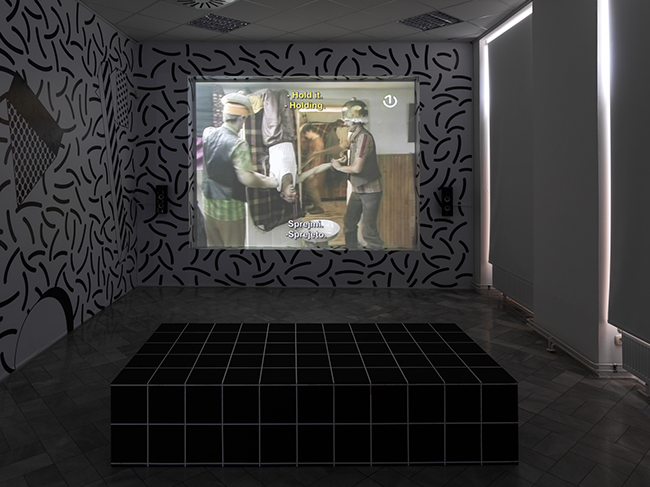
Crack Up - Crack Down, 33rd Ljubljana Biennial of Graphic Arts, curator Slavs and Tatars, 2019. Exhibition view. Photo: Jaka Babnik. MGLC Archive.
One compelling young artist is Martina Vacheva. She won the biennial’s Research Residency Award and has gained recognition both at home in Bulgaria as well as abroad. In her art, Vacheva examines Balkan stereotypes, appropriating characters from pop culture and folklore as well as other social clichés that relate to dominant political and ideological narratives. Her artwork contains a mash of vernacular culture that relies on the traditions of grotesque and naïve aesthetics to comment on sexual exploitation, myths of nationalism, masculinity and other themes. With her commentary on society and its “rituals”, she belongs to those artists, who not only speak ironically about the world around us but also confirm, repeat (as memes often do) and even strengthen already existing stereotypes and clichés – as if viewing them objectively but at the same time turning them into objects that the culture wishes to consume. As Slavs and Tatars comment: “We are not against stereotypes: rather, we do our best to allow them to implode. The aim is to create models which are not recognisably left, right, conservative or progressive but nonetheless further one’s (hopefully internationalist) aims.”[iv] Of course, such a democratised approach allows visitors to experience the 33rdLjubljana Biennial of Graphic Arts in very different ways, and, if one is able to spend a longer time in Ljubljana, to also view this event from within the collective historical and social context, which is very abundantly represented in the city itself.
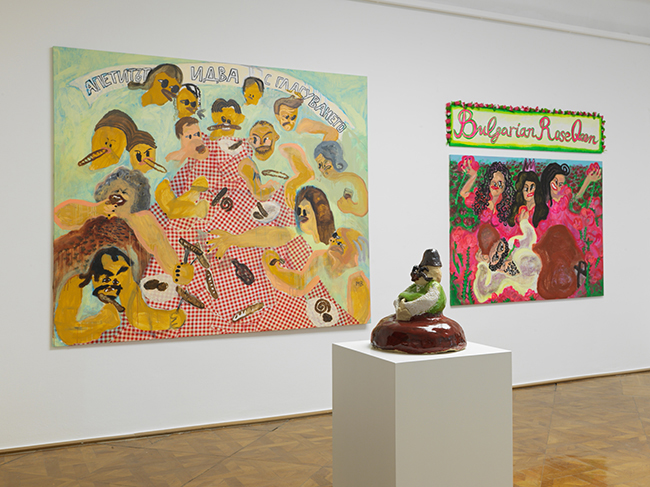
Crack Up - Crack Down, 33rd Ljubljana Biennial of Graphic Arts, curator Slavs and Tatars, 2019. Exhibition view. Photo: Jaka Babnik. MGLC Archive.
[i] https://www.biennialfoundation.org/biennials/biennial-of-graphic-arts-slovenia/
[ii] Biennial catalogue Crack Up – Crack Down. The 33rd Ljubljana Biennial of Graphic Arts 7.6.–29.9.2019. Ljubljana: International Centre of Graphic Arts, 2019, p. 8.
[iii] Ibid., p. 43.
[iv] Ajda Bračič, Invading Hordes on the Art Horizon // Outsider. Year 5, special edition, June 2019. Ljubljana: International Centre of Graphic Arts, 2019, p. 7.